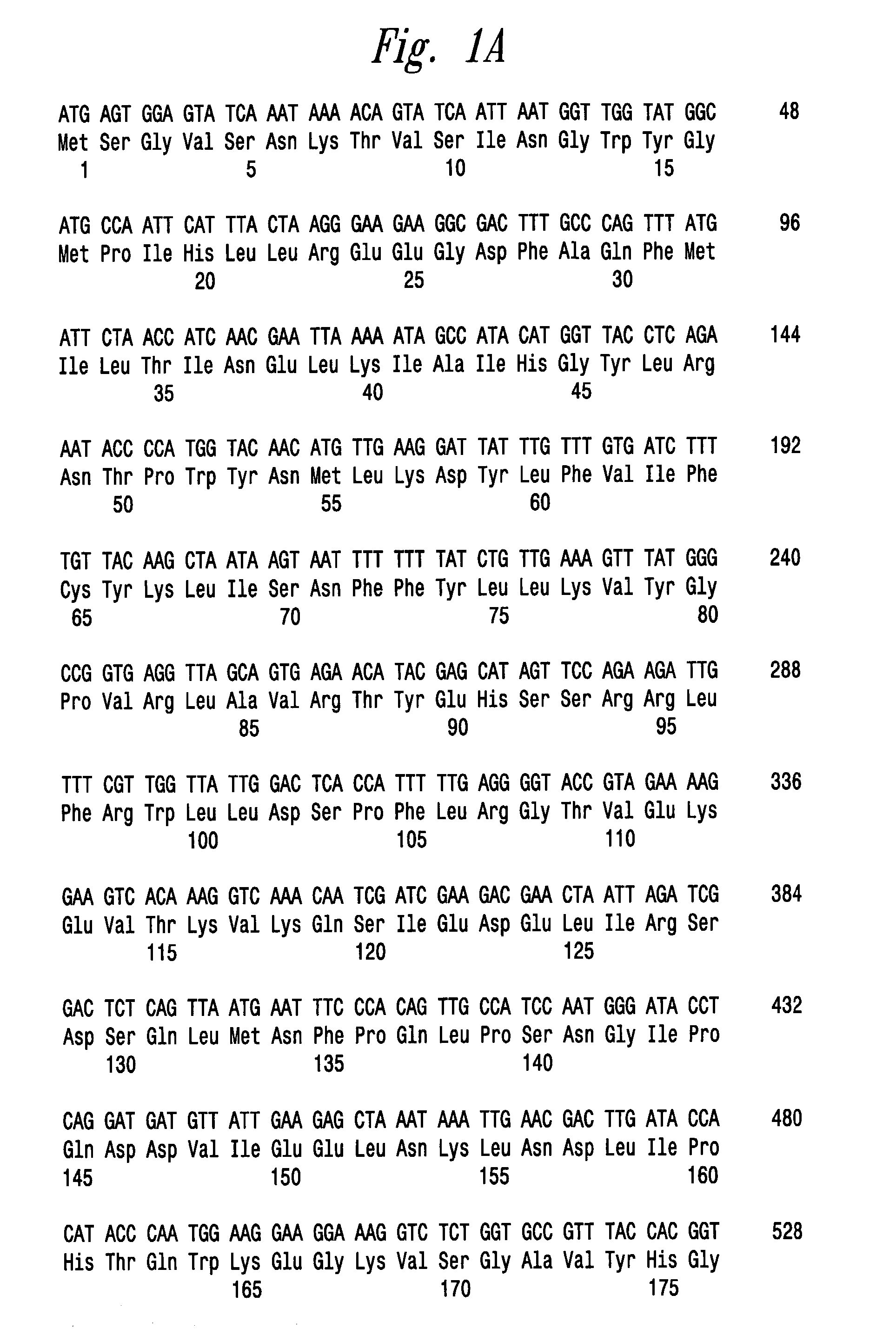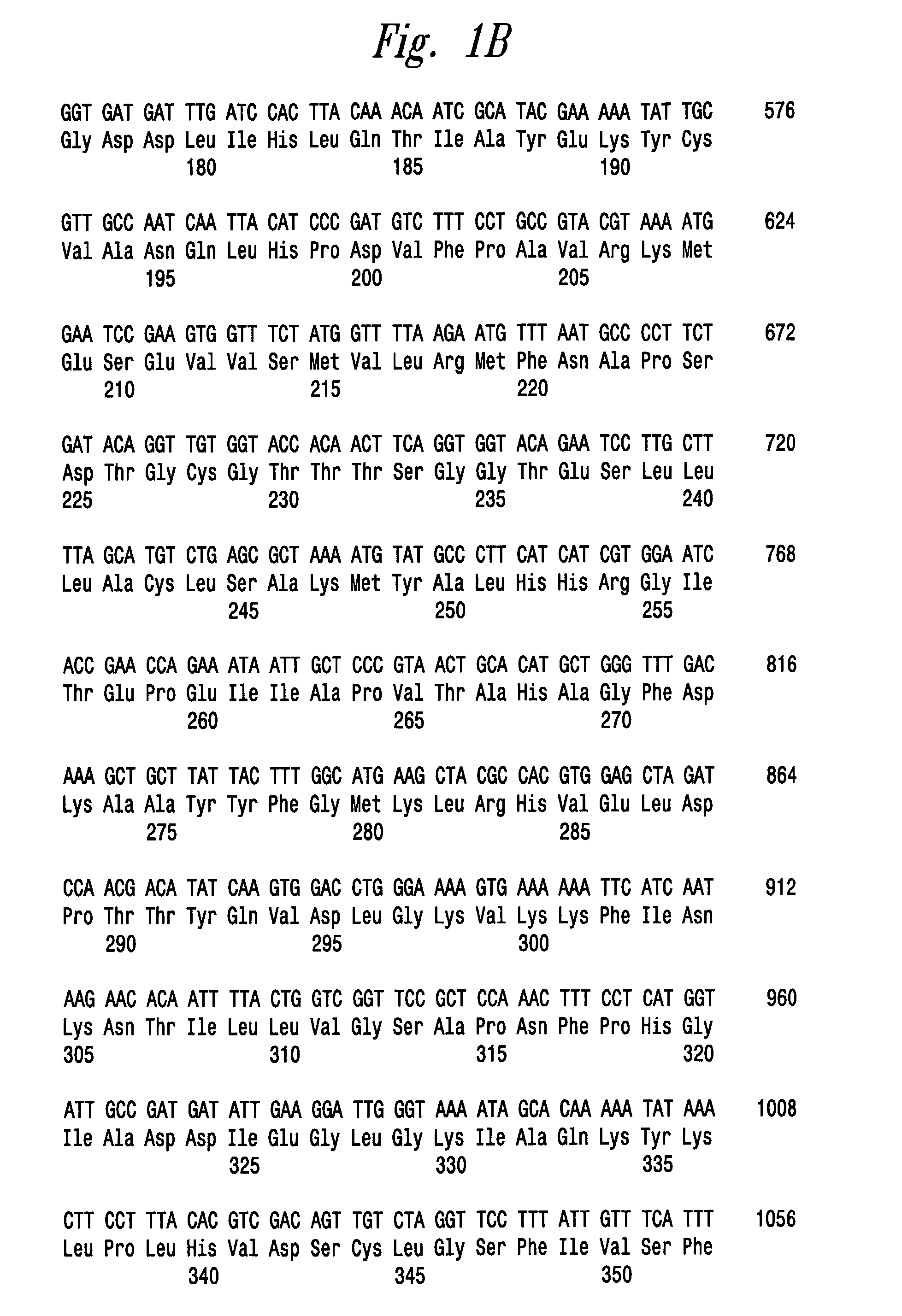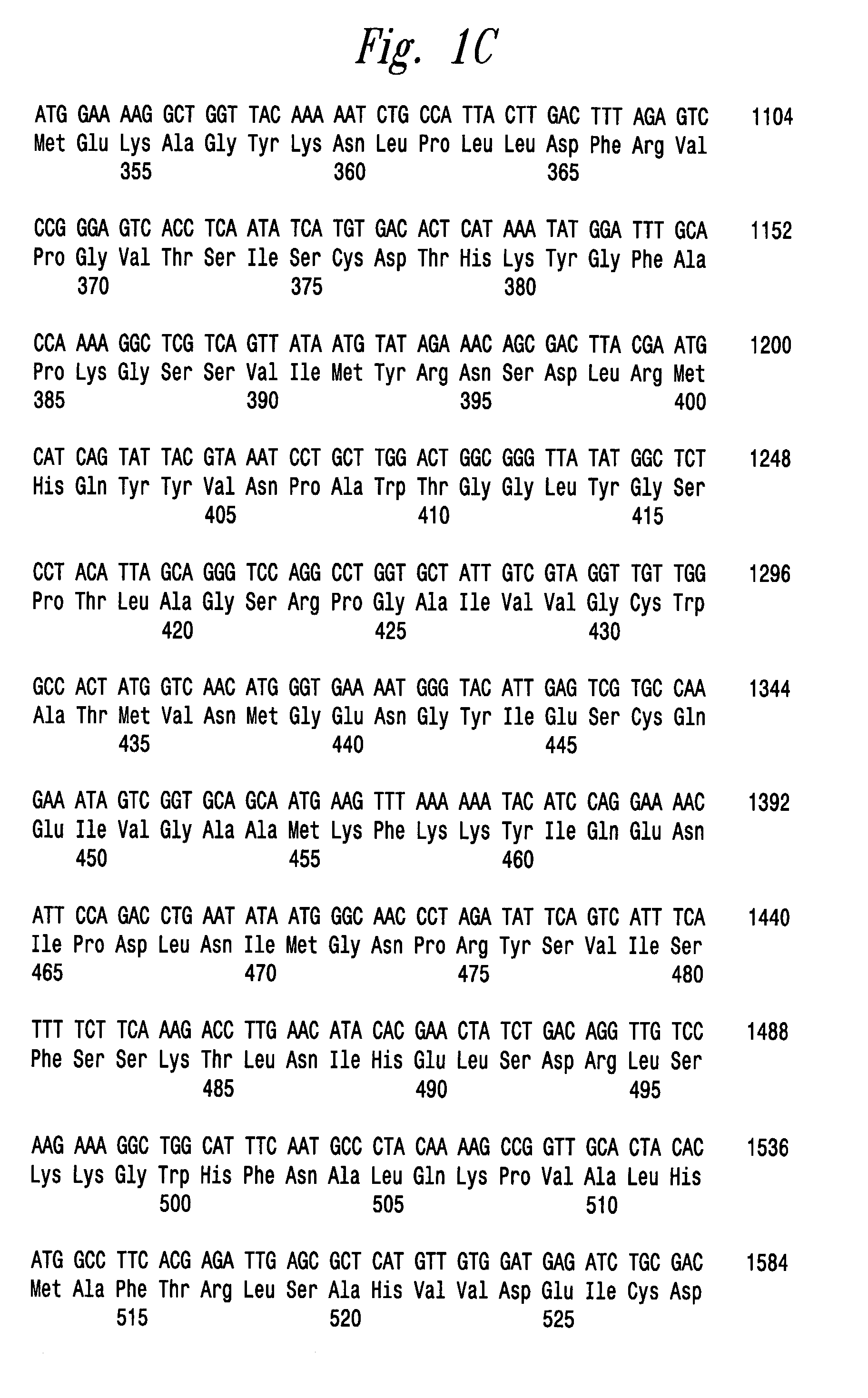Sphingosine-1-phosphate lyase polypeptides, polynucleotides and modulating agents and methods of use therefor
a lyase and sphingosine technology, applied in the field of cancer detection and therapy, can solve the problems of cancer death, no vaccine or other universally successful method for the prevention or treatment of breast cancer, and significant health problems of breast cancer, and achieve the effect of reducing the activity of sphingosine-1-phosphate lyas
- Summary
- Abstract
- Description
- Claims
- Application Information
AI Technical Summary
Benefits of technology
Problems solved by technology
Method used
Image
Examples
example 1
Isolation and Characterization of SPL cDNA from Yeast
[0072]This Example illustrates the preparation of an S. cerevisiae cDNA molecule encoding an endogenous SPL polypeptide.
[0073]Wild-type yeast cells (SGP3 (Garrett and Broach, Genes and Dev. 3:1336–1348, 1989); leu2-3,112 trp1 ura3-52 his3 ade8 ras1::HIS3) were transformed with a yeast genomic library carried on the pRS202 high-copy shuttle vector (Sikorski and Heiter, Genetics 122:19–27, 1989) containing a selectable nutritional marker (URA3). pRS202 is a modified version of the pRS306 vector, into which a 2 micron plasmid piece was inserted. Inserts from this library are approximately 6–8 kb in length. Wild type yeast were transformed with the high copy library as described by Ito et al., J. Bact. 153:163–68, 1983, selected for uracil prototrophy (i.e., the ability to grow on medium lacking uracil), and transformants were pooled and replated at a concentration of 106 cells per plate onto 1 mM D-erythro-sphingosine plates.
[0074]Si...
example 2
Isolation and Characterization of SPL cDNA from C. elegans and Mouse
[0085]This Example illustrates the identification of endogenous SPL cDNAs from C. elegans and Mus musculus.
[0086]Comparison of the yeast BST1 sequence to sequences within the GenBank database identified a full length gene from C. elegans that was identified during the systematic sequencing of the C. elegans genome. This sequence was found to encode SPL, and is shown in FIG. 2 and SEQ ID NOs:5 and 6. This and other DNA homology searches described hereinwere performed via the National Center for Biotechnology Information website using BLAST search program.
[0087]Using both S. cerevisiae and C. elegans SPL sequences to search the EST database, an expressed sequence tag from early embryonic cells of the mouse (day 8 embryo, strain C57BL / 6J) was identified. The cDNA clone containing this putative mouse SPL was purchased from Genome Systems, Inc (St. Louis, Mo.). Completion of the full length cDNA sequence revealed an 170...
example 3
Isolation and Characterization of Human SPL cDNA
[0094]This Example illustrates the identification of an endogenous human cDNA.
[0095]An EST database was searched using the mouse SPL sequence described herein. Two distinct EST sequences having strong homology to the mouse sequence were identified from human sources. One of these sequences corresponded to the C-terminus, and the other corresponded to the N-terminus. Primers were designed based on these sequences, and a DNA fragment was amplified by PCR from a human expression library made from human glioblastoma multiforme tissue RNA. The fragment was sequenced and was shown to contain a deletion, so the primers were used to amplify the gene from human fibroblast RNA. This gene has the sequence provided in SEQ ID NO:3, and the sequence of the gene containing the deletion is provided in SEQ ID NO:9.
PUM
| Property | Measurement | Unit |
|---|---|---|
| pH | aaaaa | aaaaa |
| compositions | aaaaa | aaaaa |
| Northern blot | aaaaa | aaaaa |
Abstract
Description
Claims
Application Information
 Login to View More
Login to View More - R&D
- Intellectual Property
- Life Sciences
- Materials
- Tech Scout
- Unparalleled Data Quality
- Higher Quality Content
- 60% Fewer Hallucinations
Browse by: Latest US Patents, China's latest patents, Technical Efficacy Thesaurus, Application Domain, Technology Topic, Popular Technical Reports.
© 2025 PatSnap. All rights reserved.Legal|Privacy policy|Modern Slavery Act Transparency Statement|Sitemap|About US| Contact US: help@patsnap.com



